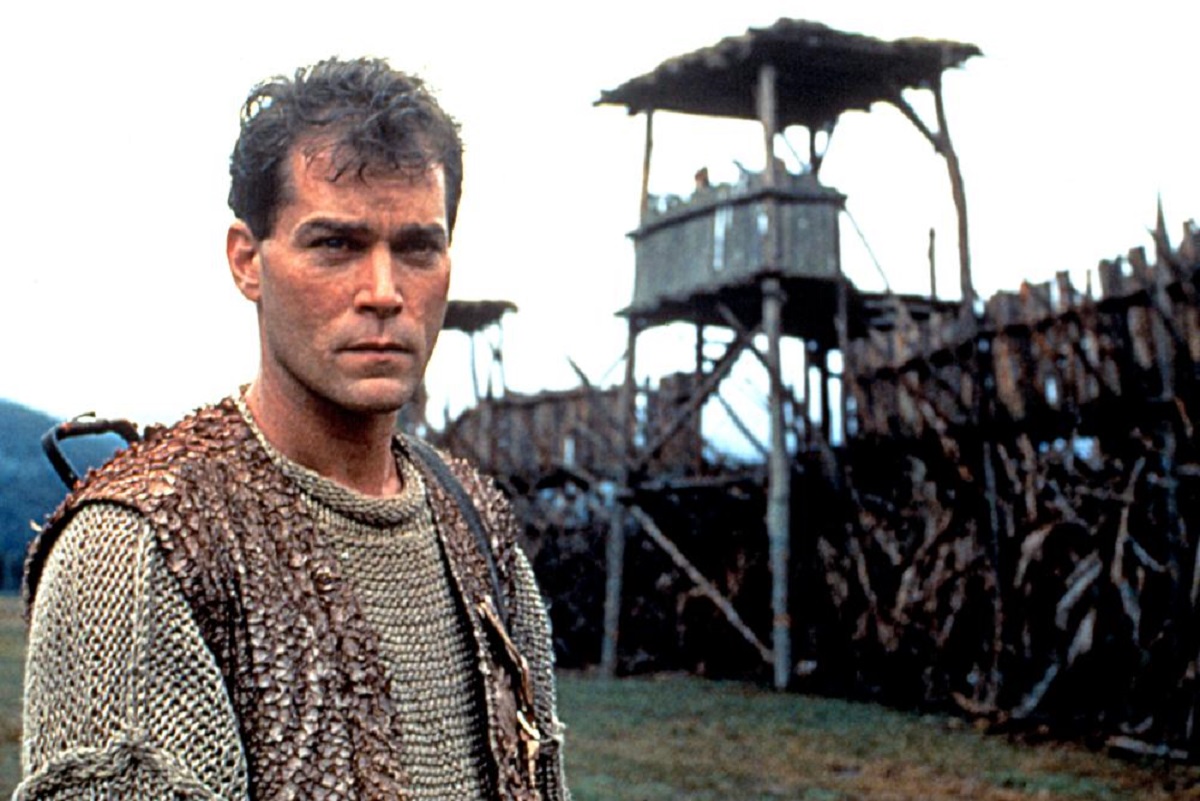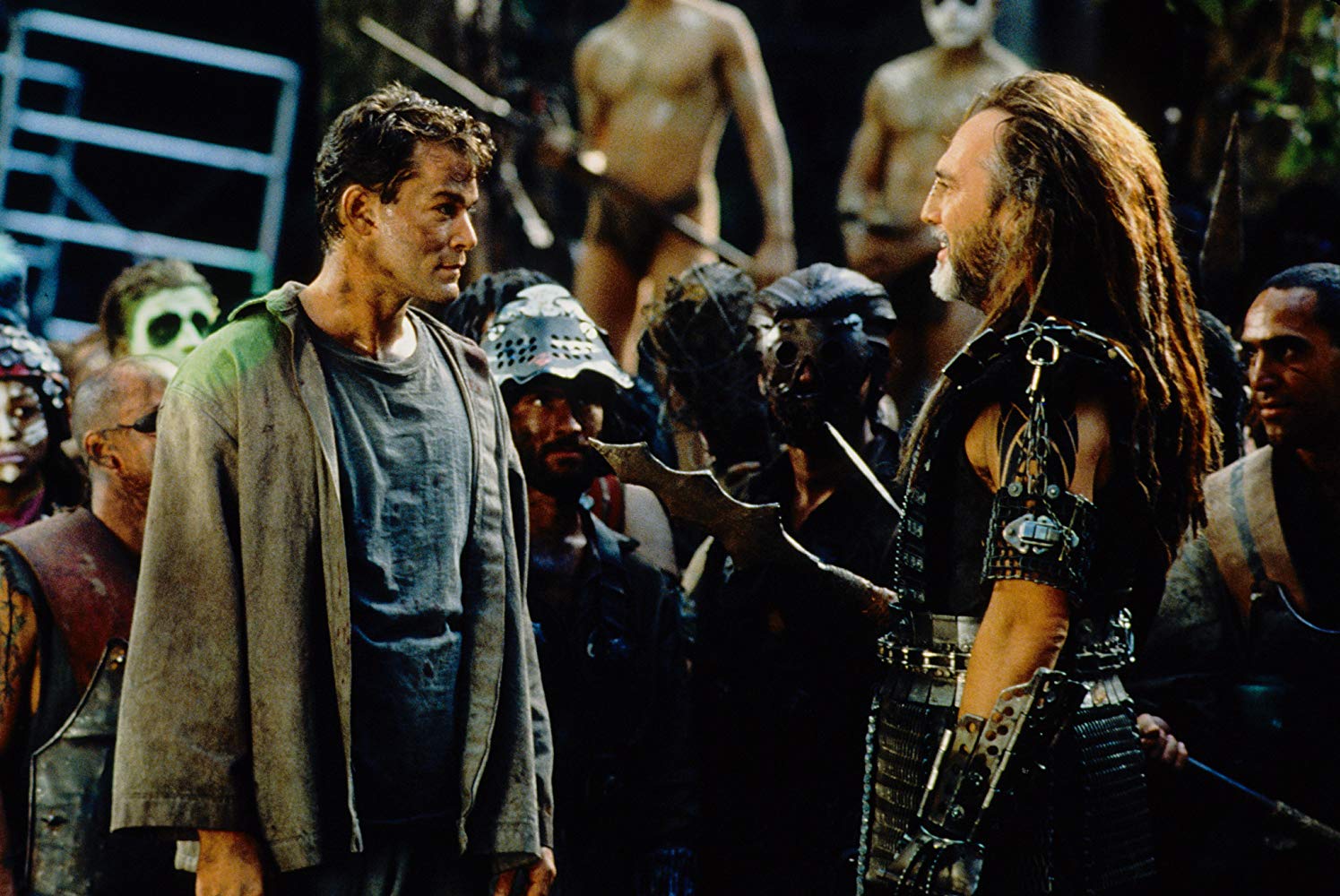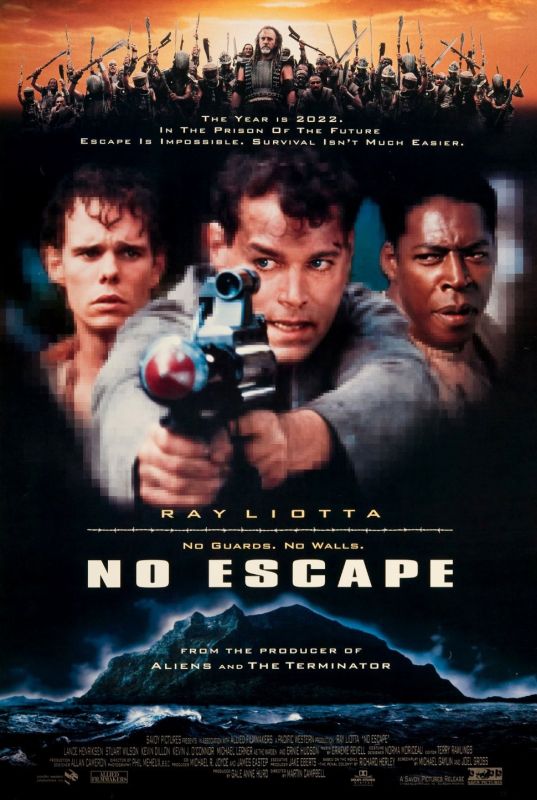aka Escape from Absolom
Crew
Director – Martin Campbell, Screenplay – Michael Gaylin & Joel Gross, Based on the Novel The Penal Colony (1987) by Richard Herley, Producer – Gale Anne Hurd, Photography – Phil Meheux, Music – Graeme Revell, Visual Effects – 4-Ward Productions (Supervisor – Robert Skotak), Digital Effects – The Computer Film Co, Special Effects Supervisor – Brian Cox, Makeup Effects – Bob McCarron, Production Design – Allan Cameron. Production Company – Pacific Western.
Cast
Ray Liotta (Captain John Robbins), Stuart Wilson (Walter Marek), Lance Henriksen (Father), Kevin Dillon (Casey), Ernie Hudson (Hawkins), Jack Shepherd (Dysart), Michael Lerner (The Warden), Ian McNeice (Tom King), Don Henderson (Kelly), Kevin J. O’Connor (Stephano)
Plot
It is the year 2022 where the prisons have been taken over by private enterprise. Convicted for shooting a superior officer, Special Forces captain John Robbins is sentenced to Absolom Island, which is reserved for the toughest, most persistent escapees. On Absolom, all prisoners have been abandoned in the wild with little in the way of tools. All attempts to escape from the island are monitored by satellite and armed helicopters. Robbins finds himself caught between the island’s two camps – the barbaric Outsiders and the peaceful Insiders who have built their own stockade. Although welcomed by the Insiders, Robbins refuses to become involved in the two camps’ ongoing war and determines to escape the island, despite nobody having done so before.
In its search for novelty, the Science-Fiction/Action film has been forced into some strange cross-genre collusions. So far we have had the SF Western – Mad Max 2 (1981) and numerous copies; the SF buddy cop film – The Hidden (1987), Dark Angel/I Come in Peace (1990), Peacemaker (1990); the SF martial arts/kickboxing film – Steel Dawn (1987), Albert Pyun’s various B-budget films; the SF wrestling film – Arena (1991); and the SF prison breakout film – Spacerage: Breakout on Prison Planet (1985), Wedlock (1991), Fortress (1993) and No Escape. Essentially, No Escape rewrites Papillon (1973) in science-fictional terms.
No Escape comes from New Zealand-born director Martin Campbell. Martin Campbell started out with some excellent tv work – Reilly, Ace of Spies (1983), Edge of Darkness (1985) and the witty genre film Cast a Deadly Spell (1991) and then went on to make the likes of the James Bond films GoldenEye (1995) and Casino Royale (2006), as well as The Mask of Zorro (1998), Vertical Limit (2000) and The Legend of Zorro (2005), the film remake of Edge of Darkness (2010) and the DC Comics superhero adaptation Green Lantern (2011).
Martin Campbell has a good eye for widescreen action – the attacks on the camp and fight scenes all look good. However, as storyteller, Campbell allows the film’s sympathies and the plot devices to lapse into stock cliches. The morality that No Escape operates on is so simplistically reduced that it infuriates. The film sets up difficult to believe black-and-white cliches – the good guys are peaceful and community-oriented, the bad guys are brutal and disorganised. It is not a credible situation – the good guys are so nice and peaceful it is almost impossible to believe they are also a group of hardened killers and defiant escapees that the prison system is supposed to have given up on.


The hero is one of the action genre’s familiar wrongly judged innocents taking on a corrupt society. Here there is a certain ugly morality at work. The hero’s attack on the corruption of society, including cold-bloodedly shooting his superior officer, is meant to serve as justification for the film’s violence ie. because the society is corrupt, he is justified in executing a superior officer. The film’s opening title card uses the corporatisation of prison systems and, in effect capitalism, as a convenient explain-all for the corrupt system – but this is another of the sweeping cliches the film uses, as we learn no more about this future society than these vague blanket explanations.
No Escape is long and obviously thinks it is an epic. Where the few brief moments of originality come is in its depiction of a from-scratch culture built around salvaged debris – there is some inventive production design here. The one thing that No Escape does show is that divorced from ex-husband James Cameron, producer Gale Anne Hurd lacks a talent for picking good genre projects. No Escape lost out heavily at the box-office.
During production, the film went through a number of title changes. Originally, it was announced under the title of the book it is based on, The Penal Colony (1987). The producers presumably did not want people to mistake it for a porn film and changed it to The Prison Colony before releasing it with the nondescript title No Escape and retitling it internationally as the more interesting Escape from Absolom.


